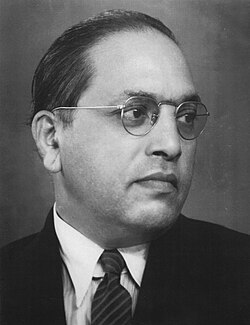 | |
| Formation | 4 May 1955 |
|---|---|
| Founder | B. R. Ambedkar |
| Legal status | Active |
| Purpose | Spread of Buddhism |
| Headquarters | Dadar East, 17/A, Gautam Nagar at Mumbai, in Maharashtra, India |
Area served | India |
Official language | Marathi, Hindi, English |
President | Rajratna Ambedkar [1] [2] |
Main organ | Buddhist Society of India |
| Affiliations | World Fellowship of Buddhists |
| Website | https://www.thebuddhistsocietyofindia.com/ |
The Buddhist Society of India, known as the Bharatiya Bauddha Mahasabha, is a national Buddhist organization in the Republic of India. It was founded by B. R. Ambedkar on 4 May 1955 in Mumbai, Maharashtra, India. Ambedkar was the drafting chairman of the Indian Constitution, polymath, human rights activist and Buddhism revivalist in India. He was first national President of the organization. At a ceremony held on 8 May 1955 in Nare Park, Bombay (now Mumbai), Ambedkar formally announced the establishment of this organization for the spread of Buddhism in India. [3] [4] Its headquarter is in Mumbai. Currently Rajratna Ambedkar, the Great Grandson of B. R. Ambedkar, is the National President of the Buddhist Society of India.
